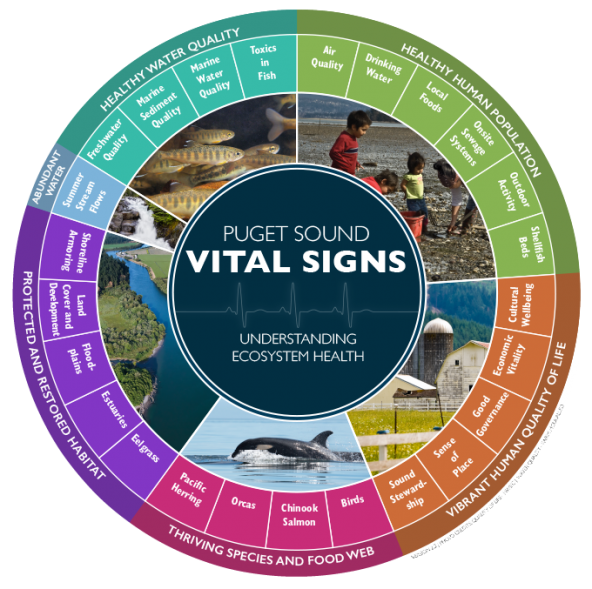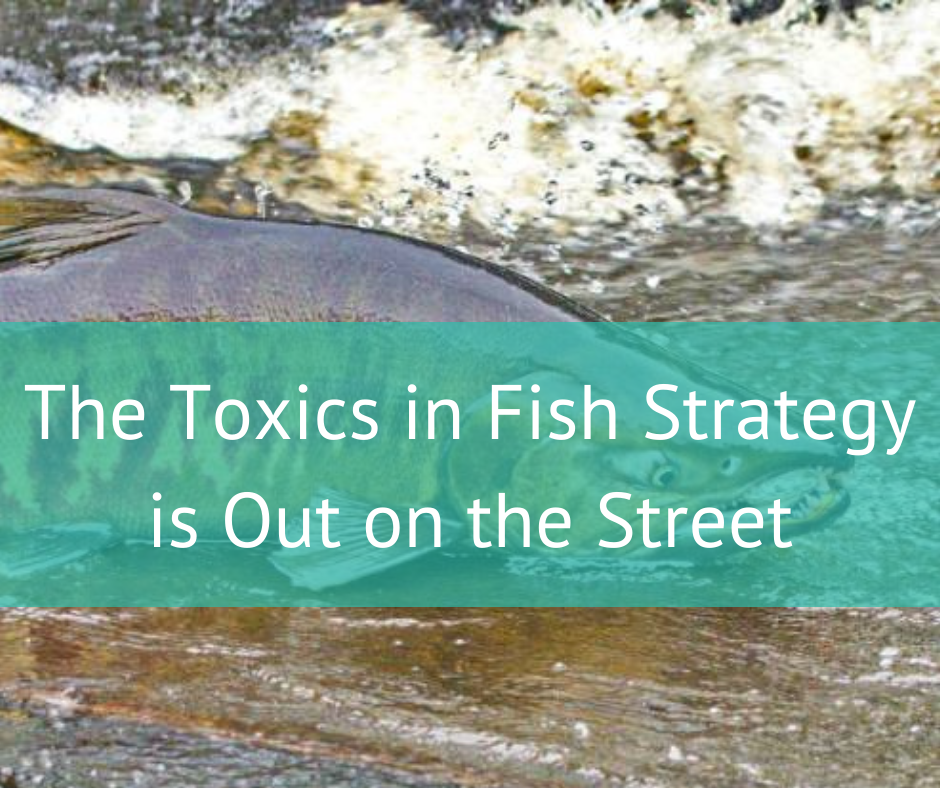The Toxics in Fish Strategy is out on the street! After four years of highly collaborative work with a multitude of partners, the Toxics in Fish Implementation Strategy has been published by the Stormwater Strategic Initiative Lead Team (SIL). It can be found in our Public Box. This includes all appendices, narratives, and supporting science and state of knowledge documentation.
The Toxics in Fish (TIF) Implementation Strategy: 1) Describes what is currently known of the status and trends of toxic contaminants in Puget Sound, 2) Provides the context by which toxic contaminants are currently managed, and 3) Describes regional strategies that can help reduce the occurrence and impacts of these toxic contaminants.
The strategy outlines a series of self-reinforcing prevention, management and clean-up approaches that include actions, geographic focus areas and potential policy changes. These have important implications for upholding Tribal Treaty Rights, respecting patterns of local fish eating patterns with an eye towards equity and environmental justice and put a spotlight on the need to change how products are made in the future.
The implementation strategy focuses on five identified strategies to prevent, manage, and clean up toxic chemicals in Puget Sound.
The strategies are:
- Prioritize, Prevent and Manage Chemicals of Emerging Concern (CECs)
- Incentivize Swap-outs
- Find and Fix Hotspots
- Incentivize Redevelopment in High-pollutant Loading Areas
- Accelerate in-and near-water Cleanup
Context for the Strategy
The strategy is based on the Puget Sound Partnership’s Vital Sign work and contextually, involves the material economy where it bumps up against the biological inability of fish, other aquatic species and humans to detoxify the chemicals that are tragically manufactured into many products. This work is notably linked to the findings of the Orca Task Force, whose toxics recommendations were the cornerstone of the strategy in many ways.

•Vital Signs measure the condition of water quality and quantity, habitat, key species, human well-being, and quality of life.
•Each Vital Sign has an associated target to achieve.
From common household goods like furniture, electronics, and toys to industrial mainstays like paint, capacitors, electrical wiring and caulking to pesticides, automotive chemicals, pharmaceuticals and personal care products like shampoo, our world is awash in toxics. These toxics make their way into the ecosystem and have detrimental effects on both humans and wildlife.
Many are known to bioaccumulate and present high risk to species such as the endangered Southern Resident Killer Whales. This contributes to the challenges facing the species and can have dire consequences such as the highly publicized death of Tahlequah in 2018.
The promising news is that the strategy sets forth a game plan for how we plan to operationalize the ideas and put them into motion in the near future.
While the process of putting the strategy on the ground is underway, one of our greatest tools outside robust prevention strategies, which also double as economic development drivers in a restoration economy, is the Safer Products for Washington law. More information about the law and its implementation can be found HERE.
Workshops front community conversations
This past winter the team started on its long journey of putting a what, who, where, when, how and why process of operationalization into play through several workshops.
We had rich discussions in the chill of winter and plan to continue this public engagement process to gather good ideas. From what we learn, we plan to use a Community of Practice model to ensure tools, approaches, barrier removal and learning how groups come to change are used to advance the work that will be needed to make progress.
The Stormwater SIL is grateful for all the incredible goodwill, smarts, and dedication that made this strategy possible.
Justin Donahue and Heidi Siegelbaum
The document referenced in this blog has been funded wholly or in part by the United States Environmental Protection Agency under the assistance of PC-01J18101 to the Washington State Department of Ecology. The contents of this document do not necessarily reflect the views or policies of the Environmental Protection Agency, nor does mention of trade names or commercial products constitute endorsement or recommendation for use.

